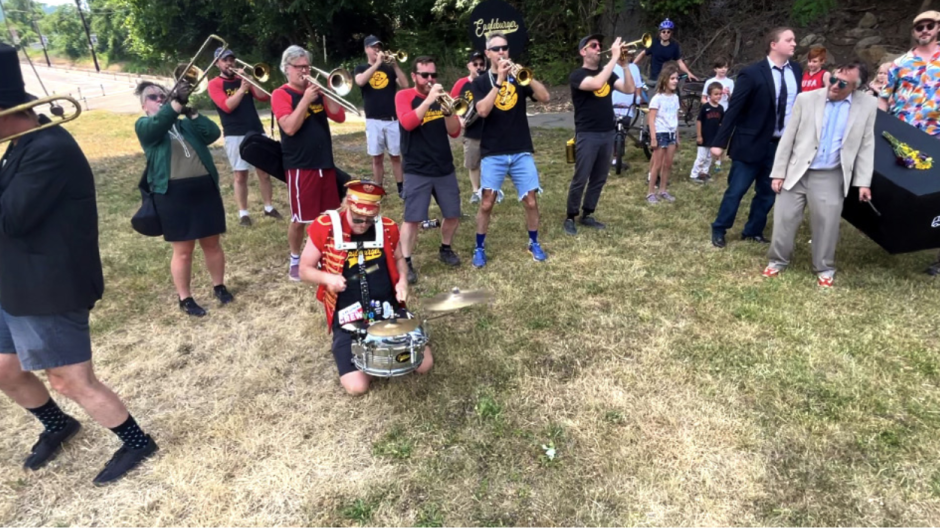On Aug. 16, a car struck 12-year-old Cameron Grimes as he and his sister began to cross Greenfield Avenue on their way home from Magee Playground.
Cameron’s mother, Leah Pugh, told us during an Aug. 17 phone call that he has a fractured arm and abrasions all over his body—including damage to his ear that will require surgery. “Other than that, he’s OK,” she said. Witnessing the accident had shaken Cameron’s 11-year-old sister Camella, but she was doing better at the time of our interview.
Neighborhood residents have been pleading with city officials for decades to address dangerous traffic patterns along Greenfield Avenue. In July, the Greenfield School Parent-Teacher Organization and the Greenfield Community Association co-sponsored a petition calling on Pittsburgh’s Department of Mobility and Infrastructure (DOMI) to make Greenfield Avenue safer.
Another accident years in the making
Greenfield School PTO secretary Marianne Holohan, who helped draft the petition, said an accident like this is exactly what she was afraid of.
The petition specifically names the part of Greenfield Avenue where Cameron was hit, noting that kids and seniors cross at its intersection with McCaslin Street to visit Magee Rec Center. It also points out the stretch between Kaercher and Irvine/Saline streets, where “despite the high number of crashes, nothing has been done.”

When Mayor Ed Gainey held a community meeting in Greenfield on Jan. 14, attendees identified conditions along Greenfield Avenue as their top concern. Mayor Gainey thanked the residents for sharing their needs and encouraged them to “be aggressive” in communicating with his office going forward.
According to DOMI, Greenfield Avenue qualifies for Pittsburgh’s Neighborhood Traffic Calming program. However, it still has not received funding for traffic-calming improvements despite ongoing requests from residents and this year’s formal budget request from the Greenfield Community Association. At a July 2022 meeting about the replacement of Swinburne Bridge, DOMI project manager Zachary Workman told residents that any changes to Greenfield Avenue would have to wait until construction of the new bridge is complete in 2026 or later. “It’s definitely something that’s on DOMI’s radar for improvements in the future but it’s in the long-range plan as resources become available.”
“Outside of projects in affluent East End neighborhoods, DOMI only seems to install traffic calming after someone has been hurt or killed,” Ms. Holohan commented in an Aug. 17 text. “We should not have to sacrifice our children for basic public safety.”
“That could be any kid”
Ms. Pugh stressed the importance of better traffic control on Greenfield Avenue, saying that what happened to her son isn’t unique. She works in Hazelwood and knew Jamel Austin, the Glen Hazel 6-year-old who was killed on Johnston Avenue last year after being hit by a car.
She was aware of Glen Hazel’s successful efforts to get traffic-calming measures on Johnston Avenue and around the neighborhood schools after Jamel’s tragic death. But she said that before Cameron’s accident she was not aware that Greenfield residents were also lobbying for traffic calming. Now, she said, she wants to bring as much attention to the problem as possible.
We asked Ms. Pugh what she would say if she could speak directly to Mayor Gainey and the public about Cameron’s accident. She responded, “[Magee Playground] belongs to every child. So in a sense, my son is everyone’s son. Many have and will cross this same street that cars will continue to speed through. Clearly, that is [the] root and reason for the petitions and pleas to the mayor and so forth. How much more effort is needed for basic residential safety?”
To sign the Keep Kids Safe with Traffic Calming on Greenfield Ave! petition and add your comments, visit https://forms.gle/CAFP9yHbshzM7Yfg9 or scan the QR code below.






Recent Comments